
Today’s Morning Buzz is all about #NationalDayOfCivicHacking.

Right Now with Daniel A. Soto (LinkedIn/Twitter)
What I’m Listening to – Khalid – 8TEEN
What I’m Watching – I recently watched Donnie Darko. It was weird
What I Did this Weekend – I passed out on a sidewalk in the Mission District (I had a really bad, once-a-year-type migraine).
What’s Civic Tech? #NationalDayOfCivicHacking
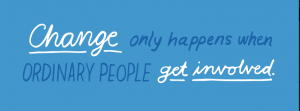
This past weekend, I had the opportunity to check out Code for America’s National Day of Civic Hacking (#NDoCH), a “nationwide day of action to bring together civic leaders to work with our local governments to tackle some our toughest challenges.” This nationwide event was held in 37 unique communities across the country, hosted by one of many Code for America Brigades—community organizers, developers, and designers that are putting technology to work in service of our local communities.
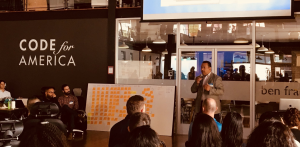
The National Day of Civic Hacking in San Francisco, CA was hosted by Code for San Francisco, dev/Mission, and over 50 community members. And while the event’s title included the word “hacking”, the event organizers fostered inclusion by emphasizing that #NDoCH would include “learning, collaboration, and empathy as we work together to better San Francisco.”
Some of the highlights included: dedicated space for projects, both new and old, to further their work; a panel presentation from Code for America about the future of the civic tech movement (which included our very own Kirsten Wyatt); and the kick-off of the Code for San Francisco Fellowship program in partnership with dev/Mission and Microsoft.
You may be wondering, “What exactly is Civic Tech?” Here’s Code for America’s definition:
Technology projects involving intentional collaboration between technologists, bureaucrats, entrepreneurs and nonprofit employees to engage the public or solve civic problems.
Civic tech includes (i.e., inclusion) technology projects with intentional (one of my favorite words) collaboration to engage the public (who we’re here to serve) or solve problems (at the end of the day, our purpose—at work—is to be a problem solver).
In this same article, Code for America also shares the meaning of “Civic Hacking” by describing a situation where people—anyone, I guess—are doing things with government data:
They’re taking government data (a lot of times released by the government hoping that people do stuff with it) and using it in a way that solves a problem. They’ll often try a bunch of different things with the data or to get a result they want that solves (or at least educates about) a civic problem.
For me, the topics of “civic tech” and “civic hacking” had initially seemed intimidating. But as I dug deeper, I realized that they don’t have to be. Here’s my take-away: civic tech and civic hacking are inherently inclusive.
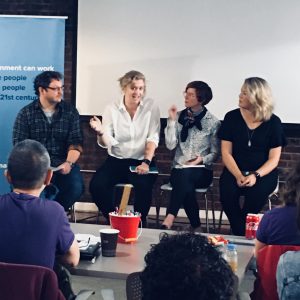
Code for America and Code for San Francisco teamed up to deliver a panel discussion on “The Future of Civic Tech,” which included these topics: the current state of civic tech, what’s ahead, and how you can get involved. (You can view the entire panel discussion on Facebook.) The three panelists were Kirsten Wyatt (ELGL), Judi Lynn Brown (CivicMakers), and Leah Bannon (U.S. Digital Services). The panelists shared a handful of stories, experiences, and tips relating to civic tech that I found helpful. For example, one of the questions posed was “How do you get non-technically skilled people involved in civic tech?” As a person who identifies as a “non-technically skilled person” in the context of civic tech, I was eager to hear their responses. This is how the panelists responded:
- There’s a need for everyone: project managers, program managers, story-tellers, researchers, etc.
- Civic tech is inclusive and in many instances, relies on volunteer capacity.
- Civic tech needs people who can flex their “accountability muscle.”
In addition, the panelists discussed the concept of “human-centered design,” a process that helps government understand the needs of the community in which services are being designed for, and creating new approaches to adequately respond to those needs. Considering its relationship to civic tech, human-centered design is pretty straight-forward. To see human-centered design in practice, consider the Government of Ontario’s Digital Service Standard. The Digital Service Standard sets out 14 points to help anyone build and deliver excellent government services:
- Understand users and their needs.
- Establish the right team.
- Be consistent.
- Design the service from start to finish.
- Ensure users succeed the first time.
- Test the end-to-end service.
- Make it accessible.
- Be agile and user-[centered].
- Use open standards and common platforms.
- Embed privacy and security by design.
- Encourage people to use digital services.
- Support those who need it.
- Measure performance.
- Test with the [government administrator].
By incorporating human-centered design, government can provide services like this:
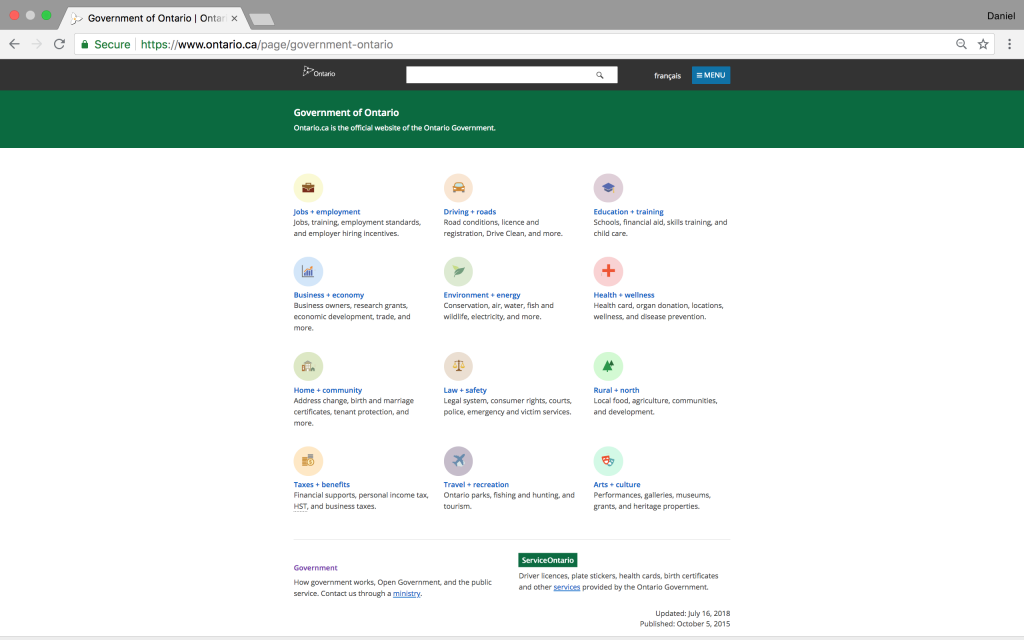
Instead of like this:
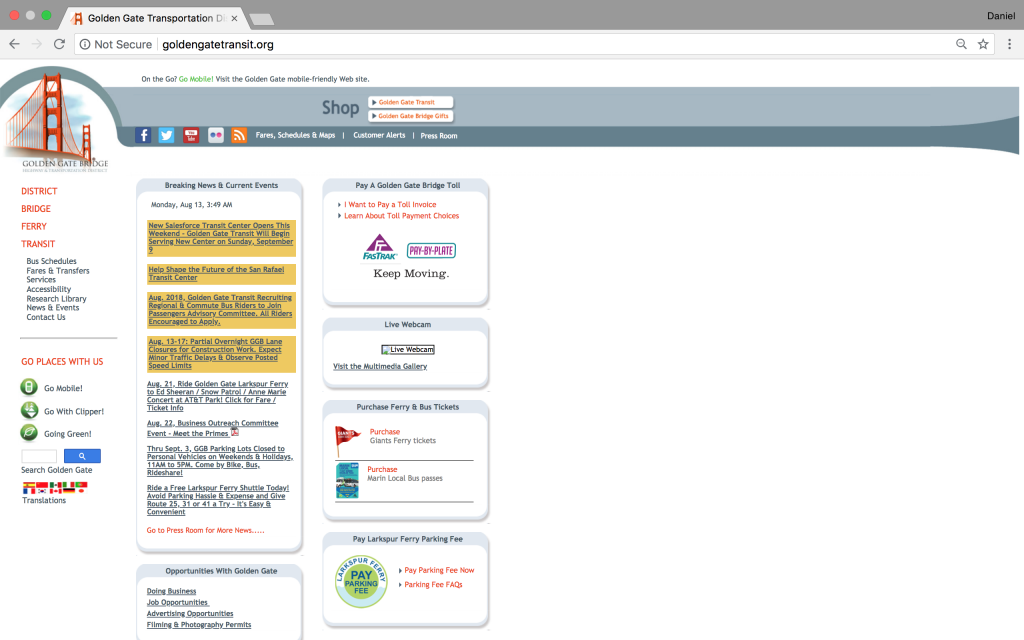
For more information on National Day of Civic Hacking, check out Code for America’s website and Kirsten Wyatt’s running blog.
